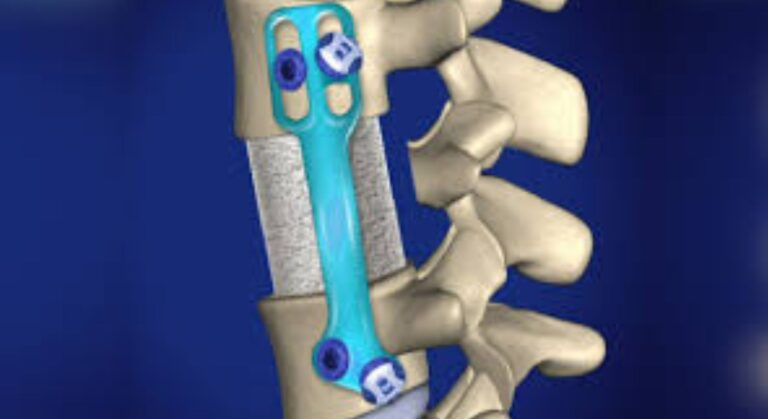Corpectomy surgery is a transformative procedure designed to address severe spinal conditions, such as vertebral compression, degenerative diseases, or tumors affecting the spine. This guide delves into the corpectomy surgery procedure, potential risks, and the recovery journey to help patients understand what to expect and make informed decisions about their healthcare.
What Is Corpectomy Surgery?
The term “corpectomy” comes from “corpus” (body) and “ectomy” (removal), referring to the surgical removal of a vertebral body. This operation is typically performed to:
- Decompress the spinal cord and nerves.
- Treat conditions like fractures, infections, or spinal tumors.
- Restore spinal stability through reconstruction using implants or bone grafts.
The procedure is often combined with spinal fusion to stabilize the area after the damaged vertebrae are removed.
Who Requires Corpectomy Surgery?
Corpectomy surgery is usually recommended for patients with:
- Spinal Cord Compression: Resulting from herniated discs, bone spurs, or tumors.
- Degenerative Spine Disorders: Severe cases where conservative treatments have failed.
- Spinal Fractures or Trauma: That compromises the structural integrity of the spine.
- Infections or Inflammatory Diseases: Such as osteomyelitis, affecting vertebral health.
Benefits of Corpectomy Surgery
1. Pain Relief
The procedure alleviates pressure on the spinal cord or nerve roots, reducing chronic pain and discomfort.
2. Improved Mobility
Patients often experience enhanced movement and the ability to perform daily tasks more comfortably.
3. Structural Stability
The replacement of damaged vertebrae with implants or grafts ensures long-term spinal stability.
4. Treatment of Underlying Issues
Corpectomy directly addresses the root cause of spinal problems, offering a more permanent solution compared to non-surgical treatments.
The Corpectomy Procedure
Corpectomy surgery is a meticulous and carefully planned operation involving several key steps:
1. Preoperative Preparation
- Imaging and Diagnosis: CT scans, MRIs, or X-rays are used to pinpoint the problem area.
- Lifestyle Adjustments: Patients may need to stop smoking, avoid certain medications, and improve overall health.
- Patient Education: The surgical team discusses risks, benefits, and recovery expectations.
2. The Surgical Process
- Anesthesia: General anesthesia ensures the patient is unconscious and pain-free.
- Incision: Depending on the location, the surgeon makes an anterior (front) or posterior (back) incision.
- Vertebrae Removal: Specialized tools are used to remove the damaged vertebral body and associated discs.
- Reconstruction: The void left by the removed vertebrae is filled with a bone graft, cage, or implant.
3. Postoperative Care
- Monitoring: Vital signs are closely observed for any complications.
- Pain Management: Medications are administered to control postoperative pain.
Risks and Complications of Corpectomy Surgery
Like any major surgery, corpectomy carries potential risks, including:
1. Infection
Post-surgical infections at the incision site or around the implant are possible but preventable with proper care.
2. Nerve Damage
Although rare, there is a chance of temporary or permanent nerve injury.
3. Blood Loss
Significant blood loss may require transfusions during or after the procedure.
4. Implant Failure
Hardware used for spinal reconstruction may shift or fail, necessitating additional surgery.
5. Prolonged Recovery
Spinal fusion can take months to heal, and patients may face temporary mobility limitations.
Recovery After Corpectomy Surgery
Corpectomy surgery recovery requires time, effort, and a commitment to rehabilitation.
1. Hospital Stay
Patients typically stay in the hospital for 3-7 days, depending on the complexity of the surgery.
2. Rehabilitation
Physical therapy begins soon after surgery to:
- Strengthen muscles supporting the spine.
- Improve mobility and flexibility.
- Teach proper body mechanics for daily activities.
3. Pain Management
Pain medications and anti-inflammatory drugs help manage discomfort during the recovery period.
4. Activity Restrictions
Patients must avoid heavy lifting, twisting, or high-impact activities for several months.
5. Follow-Up Appointments
Regular checkups with the surgeon are crucial to monitor spinal healing and the success of spinal fusion.
Long-Term Outcomes
When performed correctly and followed by proper rehabilitation, corpectomy surgery significantly improves the quality of life for patients. Benefits include:
- Reduced pain and discomfort.
- Enhanced ability to perform daily activities.
- Stabilized and properly aligned spine.
However, outcomes depend on factors such as the patient’s age, overall health, and adherence to postoperative care instructions.
Common Myths About Corpectomy Surgery
1. “It’s Extremely Risky.”
While there are risks, advances in surgical techniques and technology have made corpectomy safer than ever.
2. “Recovery Takes Too Long.”
Though recovery requires time, most patients notice significant improvements within a few months.
3. “It’s Only for Severe Cases.”
Corpectomy can address a range of spinal conditions, making it suitable for various patients.
Is Corpectomy Right for You?
Corpectomy surgery is not a one-size-fits-all solution. It’s essential to consult a qualified spinal surgeon to:
- Confirm the diagnosis.
- Explore non-surgical treatments.
- Determine whether corpectomy is the most suitable option for your condition.
Conclusion
Corpectomy surgery is a highly specialized procedure designed to treat complex spinal issues. It offers numerous benefits, including pain relief, improved mobility, and enhanced spinal stability. While there are risks involved, proper preparation, skilled surgical intervention, and dedicated rehabilitation can lead to life-changing outcomes.
If you’re considering corpectomy surgery, discuss your options with a trusted medical professional to ensure you’re making the best decision for your spinal health.
For more insightful articles related to this topic, feel free to visit- ( Click Here )
